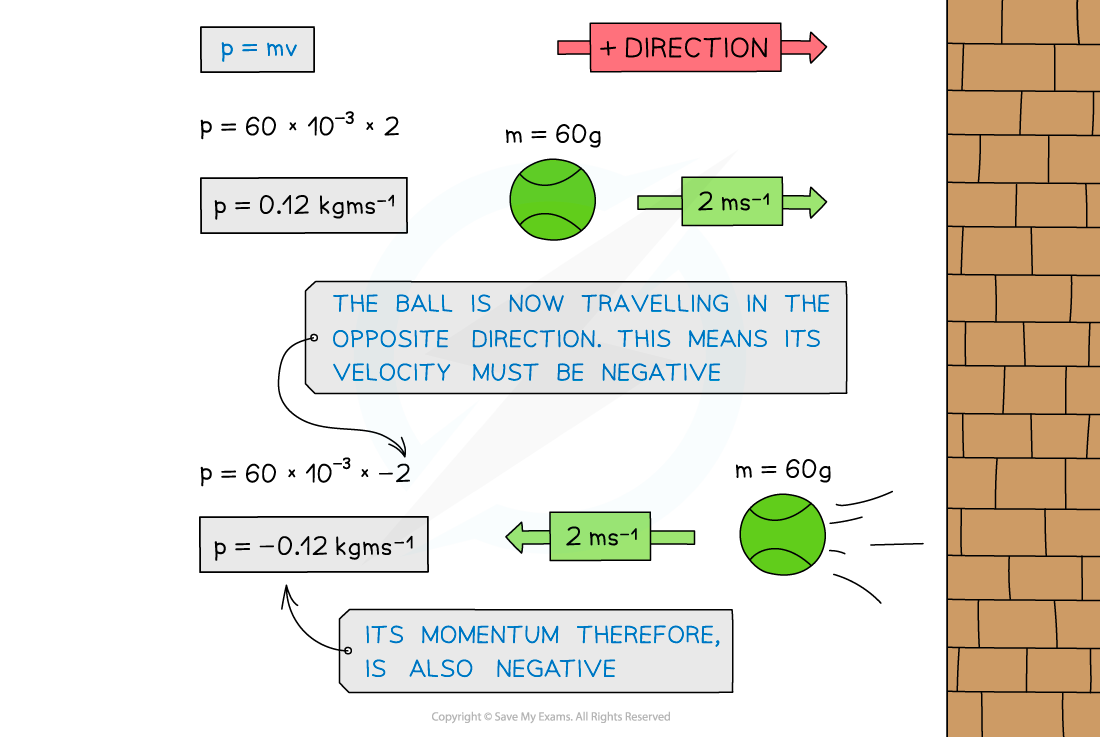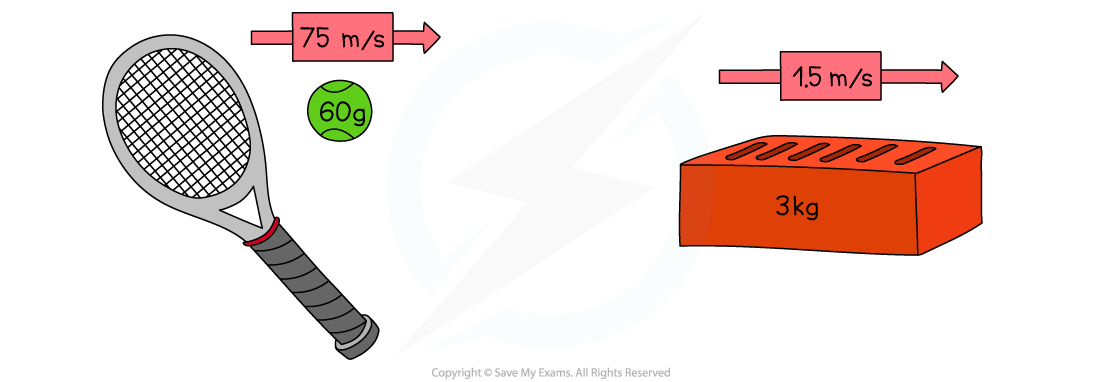Momentum (Edexcel International A Level (IAL) Physics) : Revision Note
Defining Momentum
Linear momentum (p) is defined as the product of mass and velocity

Momentum is the product of mass and velocity
Momentum is a vector quantity - it has both a magnitude and a direction
This means it can have a negative or positive value
If an object travelling to the right has positive momentum, an object travelling to the left (in the opposite direction) has a negative momentum
The SI unit for momentum is kg m s−1

When the ball is travelling in the opposite direction, its velocity is negative. Since momentum = mass × velocity, its momentum is also negative
Worked Example
Which object has the most momentum?

Answer:

Both the tennis ball and the brick have the same momentum
Even though the brick is much heavier than the ball, the ball is travelling much faster than the brick
This means that on impact, they would both exert a similar force (depending on the time it takes for each to come to rest)
Examiner Tips and Tricks
Since momentum is in kg m s−1:
If the mass is given in grams, make sure to convert to kg by dividing the value by 1000.
If the velocity is given in km s−1, make sure to convert to m s−1 by multiplying the value by 1000
The direction you consider positive is your choice, as long the signs of the numbers (positive or negative) are consistent throughout the question.
Sketching a diagram which includes the signs on positive and negative values will help you avoid mistakes when calculating

You've read 0 of your 5 free revision notes this week
Sign up now. It’s free!
Did this page help you?
